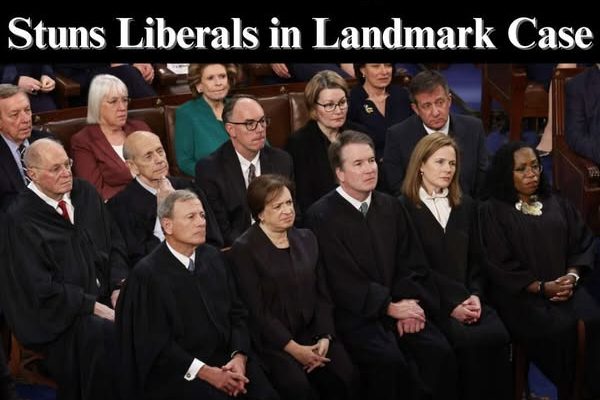Ultimately, the justices appeared to reach a consensus on nearly all points—what Justice Neil Gorsuch referred to as “radical agreement”—regarding the case of a straight white woman who alleged that her employer discriminated against her based on her sexual orientation.
Ames, the plaintiff, requested that the justices reverse a lower court ruling that dismissed her discrimination lawsuit against the Ohio Department of Youth Services, where she had been employed for over 15 years.
Following just under an hour of oral arguments, it seems likely that she will achieve her desired outcome, although it remains uncertain whether she will ultimately prevail in her discrimination case.
Ames contends that her supervisor denied her a promotion and subsequently demoted her, opting for gay candidates who were less qualified in both instances. At that time, her supervisor was also gay.
The Title VII of the Civil Rights Act of 1964 prohibits discrimination based on an individual’s sex or sexual orientation.
According to the Supreme Court, individuals wishing to file a lawsuit under Title VII must initially establish a prima facie case, which consists of a preliminary set of facts that, if not adequately explained, could be interpreted as discriminatory.
In the case of Ames, as a heterosexual woman, she lacked the “background circumstances” necessary to demonstrate that she faced discrimination due to her affiliation with a majority group, leading the Sixth Circuit U.S. Court of Appeals to conclude that she did not satisfy that requirement.
Ames contended that the “background circumstances” stipulation was excessively burdensome for her as a straight individual. The attorney representing the state of Ohio appeared to concur with the majority of the justices.
“We agree, Ohio agrees, that it is unjust to treat individuals differently,” stated Ohio Solicitor General Elliot Gaiser during his questioning of Justice Amy Coney Barrett.
Justice Sonia Sotomayor, the most senior liberal member of the court, remarked that there was “something suspicious” regarding Ames’ case that warranted further examination by the lower courts.
Justice Neil Gorsuch remarked, “It appears we are in complete agreement today,” regarding the necessity for the Court to reaffirm that Title VII is applicable to all individuals without exception.
Gaiser contended that even if the Court were to nullify the Sixth Circuit’s “background circumstances” rule concerning white, heterosexual, male (i.e., majority-group) plaintiffs, Ames may not have sufficiently demonstrated a case of discrimination to proceed.
Justice Brett Kavanaugh indicated that the Supreme Court is expected to issue a narrow ruling, allowing a lower court to further contemplate Ames’ claims based on the facts before determining whether to advance.
Kavanaugh stated, “All the Court needs to articulate is a very brief opinion indicating that discrimination based on sexual orientation, whether one is gay or straight, is forbidden, and the standards remain consistent regardless of the direction of that discrimination.”
Experts in employment law noted that such a ruling could potentially facilitate the ability of individuals from majority groups to pursue legal action claiming discrimination.
“On a larger scale, the ruling will serve to remind the public that the law equally forbids discrimination against both majority and minority groups,” stated Jonathan Segal, an employment attorney and partner at Duane Morris LLP, a private firm located in Philadelphia. “This is likely to lead to an increase in all circuits of the already rising number of claims from individuals belonging to so-called majority groups.”
“Naturally, the Ames decision should not be considered in a vacuum,” Segal continued. “It will occur at a time when DEI programs are already facing legal scrutiny. A determination of ‘reverse discrimination’ could expose an employer’s DEI initiatives to federal and state investigations.”
A ruling in the case — Ames v. Ohio Department of Youth Services — is anticipated by the end of June.

